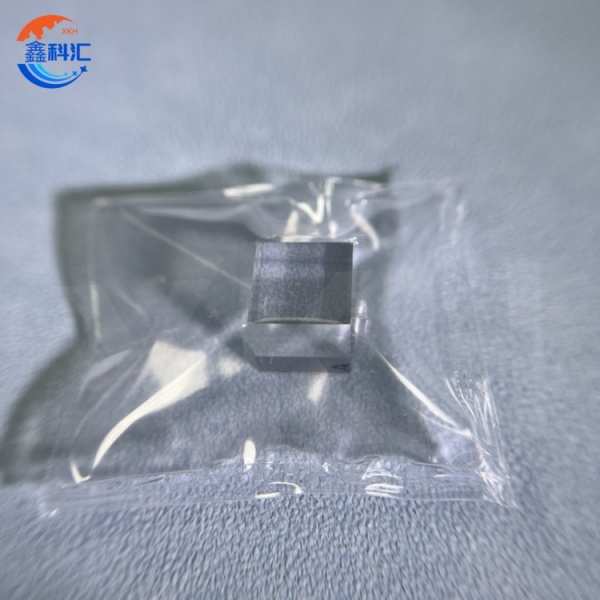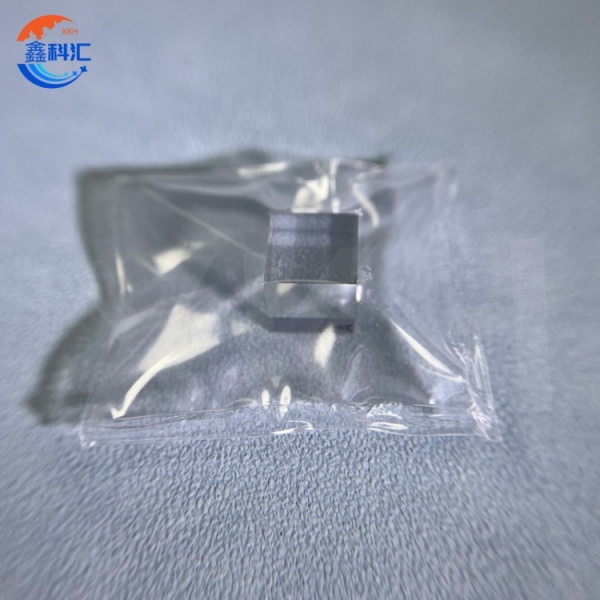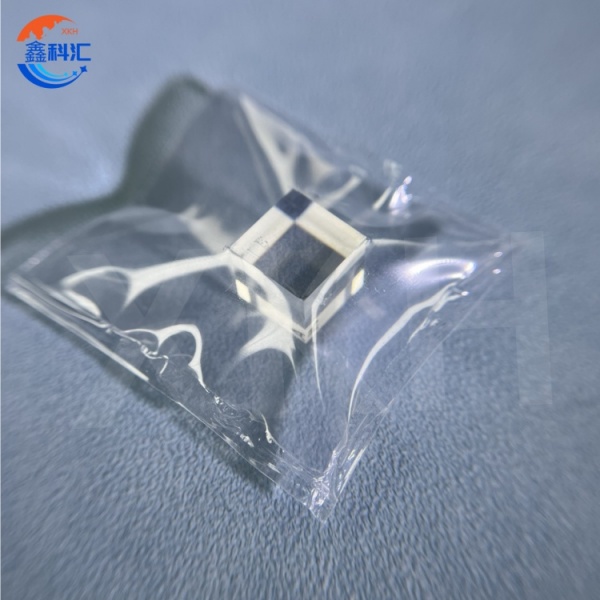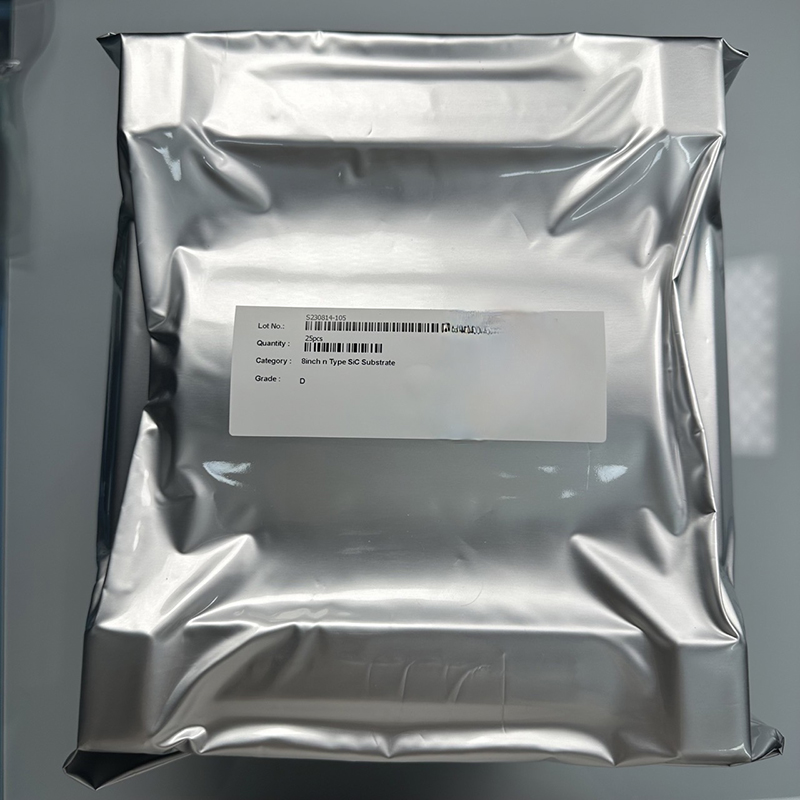Sic optical lens 6SP 10x10x10mmt 4H-SEMI HPSI Customized size
Key Characteristics
| Chemical composition | Al2O3 |
| Hardness | 9Mohs |
| Optic nature | Uniaxial |
| Refractive index | 1.762-1.770 |
| Birefringence | 0.008-0.010 |
| Dispersion | Low, 0.018 |
| Lustre | Vitreous |
| Pleochroism | Moderate to Strong |
| Diameter | 0.4mm-30mm |
| Diameter tolerance | 0.004mm-0.05mm |
| length | 2mm-150mm |
| length tolerance | 0.03mm-0.25mm |
| Surface quality | 40/20 |
| Surface roundness | RZ0.05 |
| Custom shape | both ends flat, one end redius, both end redius, saddle pins and special shapes |
Key Features
1.High Refractive Index & Broad Transmission Window: SiC optical lenses demonstrate exceptional optical performance with a refractive index of approximately 2.6-2.7 across their operational spectrum. This wide transmission window (600-1850 nm) encompasses both visible and near-infrared regions, making them particularly valuable for multi-spectral imaging systems and broadband optical applications. The material's low absorption coefficient in these ranges ensures minimal signal attenuation, even in high-power laser applications.
2.Exceptional Nonlinear Optical Properties: Silicon carbide's unique crystalline structure endows it with remarkable nonlinear optical coefficients (χ(2) ≈ 15 pm/V, χ(3) ≈ 10-20 m2/V2), enabling efficient frequency conversion processes. These properties are being actively exploited in cutting-edge applications such as optical parametric oscillators, ultrafast laser systems, and all-optical signal processing devices. The material's high damage threshold (>5 GW/cm2) further enhances its suitability for high-intensity applications.
3.Mechanical & Thermal Stability: With an elastic modulus approaching 400 GPa and thermal conductivity exceeding 300 W/m·K, SiC optical components maintain exceptional stability under mechanical stress and thermal cycling. The ultra-low coefficient of thermal expansion (4.0×10-6/K) ensures minimal focal shift with temperature variations, a critical advantage for precision optical systems operating in fluctuating thermal environments such as space applications or industrial laser processing equipment.
4.Quantum Properties: The silicon vacancy (VSi) and divacancy (VSiVC) color centers in 4H-SiC and 6H-SiC polytypes exhibit optically addressable spin states with long coherence times at room temperature. These quantum emitters are being integrated into scalable quantum networks and are particularly promising for developing room-temperature quantum sensors and quantum memory devices in photonic quantum computing architectures.
5. CMOS Compatibility: SiC's compatibility with standard semiconductor fabrication processes enables direct monolithic integration with silicon photonics platforms. This allows for the creation of hybrid photonic-electronic systems combining SiC's optical advantages with silicon's electronic functionality, opening new possibilities for system-on-chip designs in optical computing and sensing applications.
Primary Applications
1.Photonic Integrated Circuits (PICs): In next-generation PICs, SiC optical lenses enable unprecedented integration density and performance. They are particularly valuable for terabit-scale optical interconnects in data centers, where their combination of high refractive index and low loss enables tight bending radii without significant signal degradation. Recent advances have demonstrated their use in neuromorphic photonic circuits for artificial intelligence applications, where nonlinear optical properties enable all-optical neural network implementations.
2.Quantum Information & Computing: Beyond color center applications, SiC lenses are being used in quantum communication systems for their ability to maintain polarization states and their compatibility with single-photon sources. The material's high second-order nonlinearity is being exploited for quantum frequency conversion interfaces, essential for connecting different quantum systems operating at disparate wavelengths.
3.Aerospace & Defense: The radiation hardness of SiC (withstanding doses >1 MGy) makes it indispensable for space-based optical systems. Recent deployments include star trackers for satellite navigation and optical communication terminals for intersatellite links. In defense applications, SiC lenses are enabling new generations of compact, high-power laser systems for directed energy applications and advanced LiDAR systems with improved range resolution.
4.UV Optical Systems: SiC's performance in the UV spectrum (particularly below 300 nm) combined with its resistance to solarization effects makes it the material of choice for UV lithography systems, ozone monitoring instruments, and astrophysics observation equipment. The material's high thermal conductivity is particularly beneficial for high-power UV applications where thermal lensing effects would degrade conventional optics.
5.Integrated Photonic Devices: Beyond traditional waveguide applications, SiC is enabling new classes of integrated photonic devices including optical isolators based on magneto-optic effects, ultra-high-Q microresonators for frequency comb generation, and electro-optic modulators with bandwidths exceeding 100 GHz. These advancements are driving innovations in optical signal processing and microwave photonics systems.
XKH's service
XKH products are widely used in high-tech fields such as spectroscopy analysis, laser systems, microscopes, and astronomy, effectively enhancing the performance and reliability of optical systems. Additionally, XKH provide comprehensive design support, engineering services, and rapid prototyping to ensure customers can quickly validate and mass-produce their products.
Choosing our SiC optical prisms, you will benefit from:
1. Superior Performance: SiC materials offer high hardness and thermal resistance, ensuring stable performance even under extreme conditions.
2.Customized Services: We provide full-process support from design to production based on customer requirements.
3.Efficient Delivery: With advanced processes and rich experience, we can quickly respond to customer needs and deliver on time.













